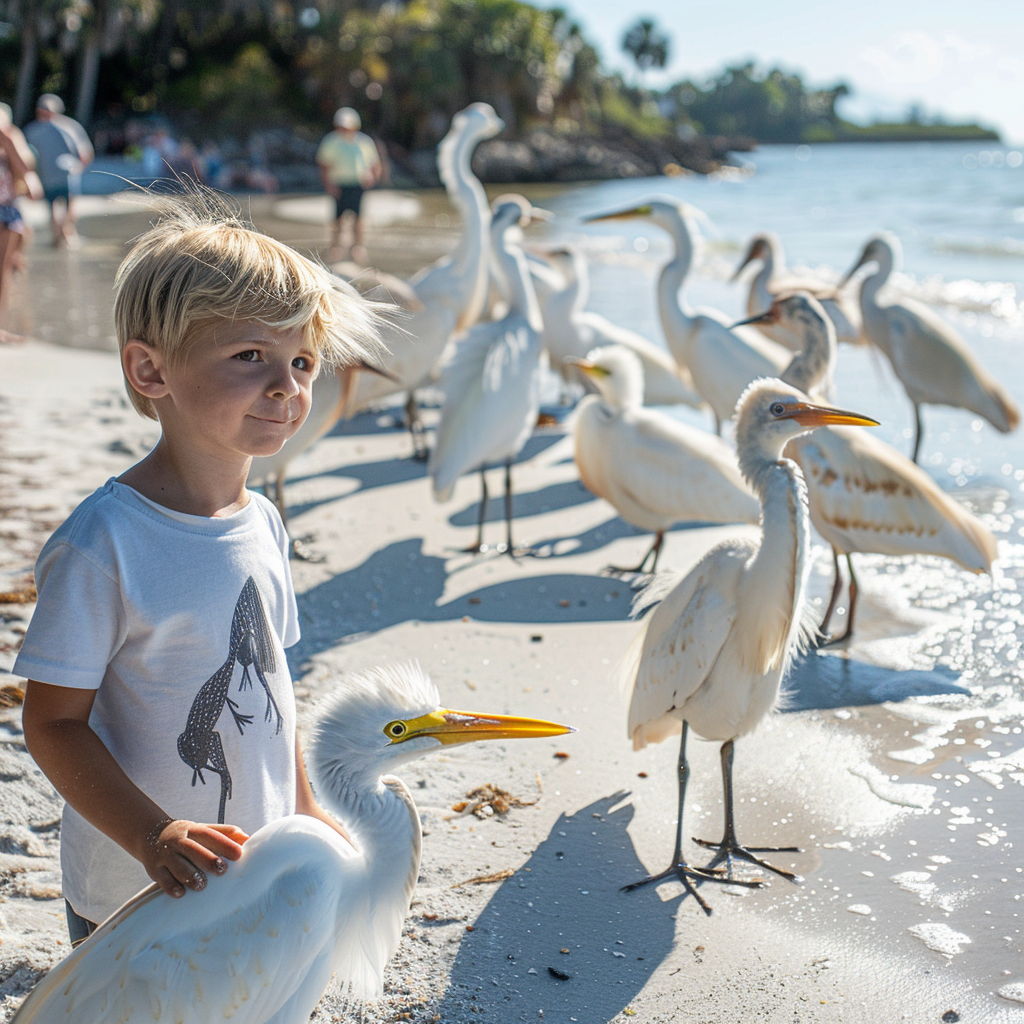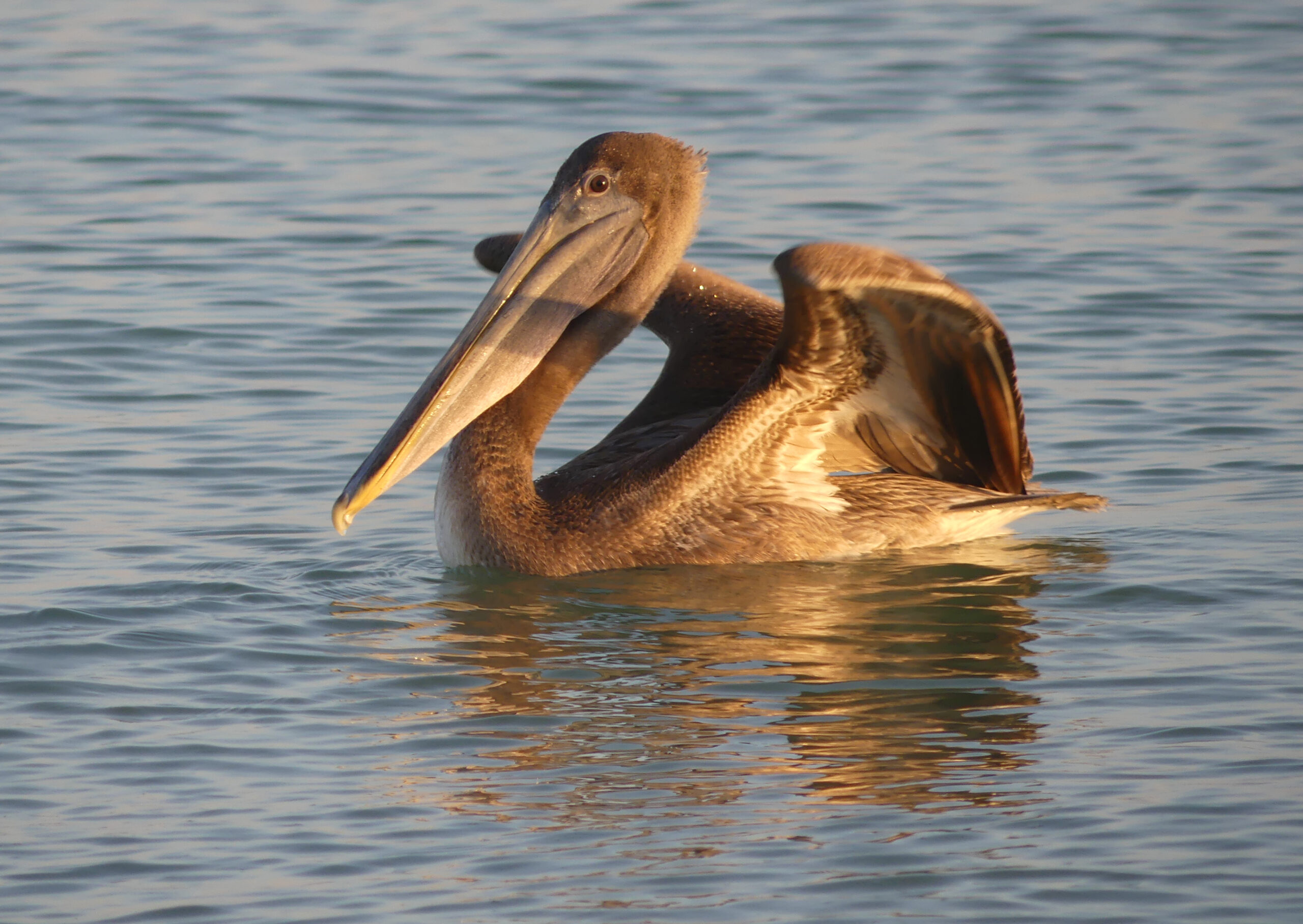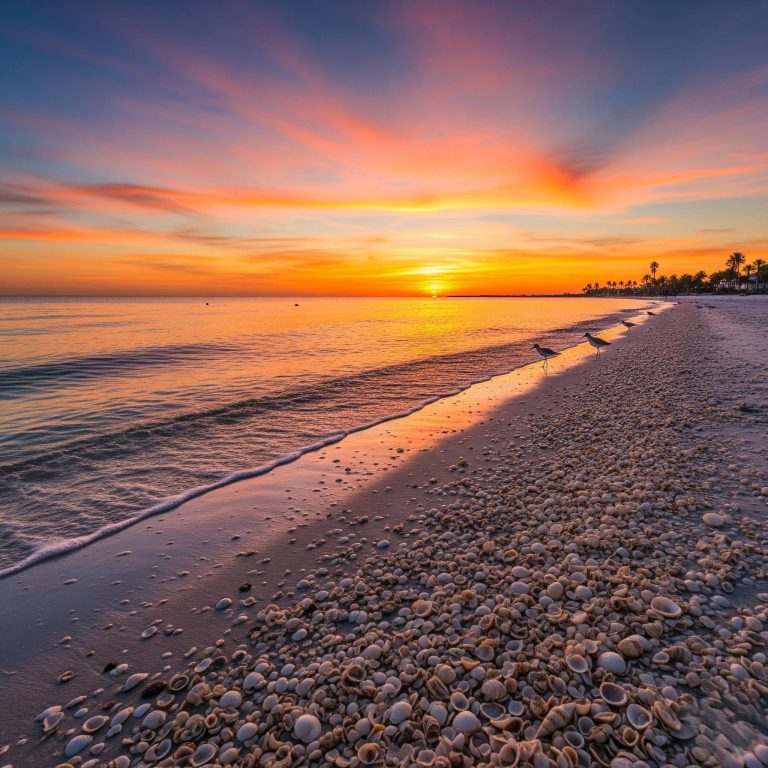
“Think you know the birds of Sanibel? Wait until you see these…“
Pelicans are nature’s “teamwork masters”, according to biologist Samuels. “Their coordinated hunting tactics are remarkable.” Watching them dive into the waves, it’s as if they’re choreographed, each pelican knowing its part in the dance. But there’s more to these birds than meets the eye.
Picture them soaring effortlessly above the shoreline, wings stretched wide. These birds are built for survival, from their iconic beak pouches to their ability to glide for miles without flapping. Whether you’re a curious explorer or a seasoned birdwatcher, uncover the hidden world of Sanibel’s pelicans—it’s nothing short of amazing!
Did You Know?
Fun Pelican Facts
Did you know a pelican’s beak can hold up to three gallons of water? Or that these majestic birds have been around for over 30 million years? Get to know the quirky and amazing side of pelicans with these cool facts:
- A pelican can dive from heights of up to 60 feet to catch fish!
- Despite their size, pelicans are incredibly light because their bones are filled with air.
- Pelicans are skilled in cooperative hunting, often working together to herd fish into shallow waters.
Birds of Sanibel Island: A Birdwatcher’s Paradise
Sanibel Island, located off the coast of Florida, is a haven for birdwatchers. With over 200 species of birds, the island offers a diverse and vibrant birding experience. Here are some of the most notable birds you can spot on Sanibel Island, along with their size, appearance, habits, and other interesting details.
- Great Egret
- Great Blue Heron
- Roseate Spoonbill
- Osprey
- Brown Pelican
1. Great Egret

Credit : James St. John
- Size and Appearance: The Great Egret is a tall, elegant bird, standing about 3.3 feet (1 meter) tall with a wingspan of up to 5.5 feet (1.7 meters). It has a slender, white body, a long neck, yellow beak, and black legs.
- Habits: Great Egrets are often seen wading in shallow waters, hunting for fish, frogs, and small mammals. They are known for their graceful flight and striking breeding plumes during the mating season.
- Interesting Fact: These birds were once hunted for their beautiful feathers, which were used in ladies’ hats, leading to a significant decline in their population.
2. Great Blue Heron

Credit : Ralph E McMillan
- Size and Appearance: The Great Blue Heron is the largest heron in North America, standing about 4.5 feet (1.4 meters) tall with a wingspan of up to 6.6 feet (2 meters). It has a blue-gray body, a white face, and a distinctive black stripe over its eye.
- Habits: These herons are solitary hunters, often seen standing still in shallow water, waiting to spear fish with their sharp beaks. They are also known to eat amphibians, reptiles, and small mammals.
- Interesting Fact: Great Blue Herons can be found in both freshwater and saltwater habitats, making them highly adaptable.
3. Roseate Spoonbill

Credit : facebook.com/reflectioninapool
- Size and Appearance: The Roseate Spoonbill is a striking bird with a pink body, red shoulders, and a distinctive spoon-shaped bill. It stands about 2.5 feet (0.8 meters) tall with a wingspan of up to 4 feet (1.2 meters).
- Habits: These birds are often seen wading in shallow waters, sweeping their bills from side to side to catch small fish, crustaceans, and insects. They are social birds, often found in groups.
- Interesting Fact: The pink coloration of the Roseate Spoonbill comes from the carotenoid pigments in their diet.
4. Osprey

Credit : Pete Markham
- Size and Appearance: The Osprey is a large raptor, with a wingspan of up to 6 feet (1.8 meters). It has a white underside, a dark brown back, and a distinctive black eye stripe.
- Habits: Ospreys are expert fish hunters, often seen diving into the water to catch fish with their sharp talons. They build large nests near water, often on man-made structures.
- Interesting Fact: Ospreys are also known as “fish hawks” due to their diet, which consists almost exclusively of fish.
5. Brown Pelican

Credit : Simon (celery) Marshall
- Size and Appearance: The Brown Pelican is a large bird, with a wingspan of up to 7.5 feet (2.3 meters). It has a brown body, a white head, and a long bill with a large throat pouch.
- Habits: Brown Pelicans are often seen flying low over the water, diving to catch fish. They are social birds, often found in large flocks.
- Interesting Fact: Brown Pelicans are one of the few pelican species that dive from the air to catch their prey.
Interactive Poll
Test Your Knowledge on Sanibel Island’s Birds! 🦅🌴
Are you a birdwatching enthusiast or just curious about the feathered friends of Sanibel Island? Take this fun and easy quiz to see how much you know about the diverse bird species that call this beautiful island home. From the elegant Great Egret to the striking Roseate Spoonbill, discover fascinating facts about these incredible birds. Ready to test your knowledge? Let’s get started! 📸✨
Conclusion🧐
Sanibel Island is truly a birdwatcher’s paradise,
Offering a rich and diverse avian population that captivates both seasoned birders and casual observers. From the elegant Great Egret to the striking Roseate Spoonbill, each bird species adds to the island’s unique charm and natural beauty. Whether you’re exploring the island’s scenic trails or wading through its shallow waters, you’re sure to encounter these magnificent birds in their natural habitat.

Credit : sanlib.org
Thank you for visiting our website and learning about the incredible bird species of Sanibel Island.
We hope this guide inspires you to explore the island and experience its vibrant birdlife firsthand. Happy birdwatching! 🦅🌴
#SanibelBirds #Birdwatching #SanibelIsland #NatureLovers #ExploreSanibel #WildlifePhotography #Birding #IslandAdventure #SanibelWildlife #BirdLovers


I’m Ayla Wolesky, and I’ve spent years exploring every corner of Sanibel Island. From its pristine beaches to the hidden gems only locals know about, I’m passionate about sharing everything this beautiful island has to offer. Whether it’s the best spots for shelling, the wildlife that makes Sanibel so special, or where to enjoy a perfect sunset, I’ve got you covered. My goal is to provide insider tips and up-to-date information that will help you experience Sanibel Island like never before.




